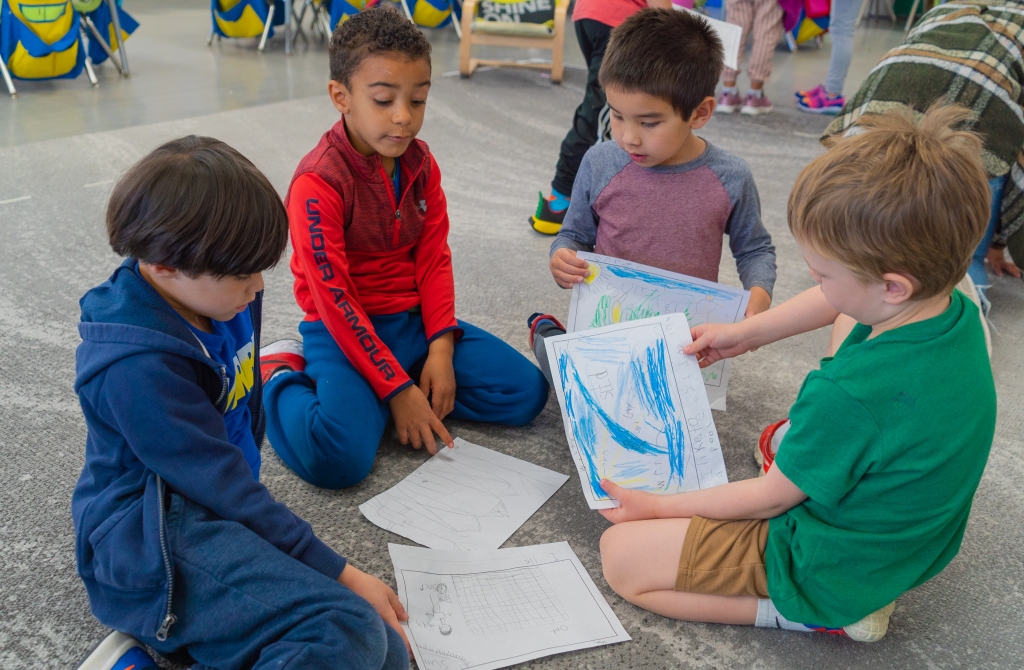Few skills, if any, are more fundamental to early childhood education than reading. The American Academy of Pediatrics affirms this sharing that “reading regularly with young children stimulates optimal patterns of brain development and … builds language, literacy, and social-emotional skills that last a lifetime.” The Willows recognizes the distinct impact that reading has on a child’s cognitive and emotional development. As a result, a significant portion of our Kindergarten language arts curriculum focuses on laying the groundwork for a lifetime of reading. Using a variety of literacy strategies, including phonics instruction and reading & writing workshops, our Kindergarten classes prepare students to become skilled and confident readers.
A crucial step in developing proficient reading skills is solidifying the sound each letter of the alphabet makes, especially how certain letters sound when they appear together. Known as phonics, this method for teaching reading helps students understand the relationship between letters and their associated sounds in the English language. Taking it one letter at a time, our Kindergarten classes often coordinate phonics lessons with engaging activities that help the learning come alive. For example, each of our Kindergarten classes recently explored the letter “J” and its unique sound. Integrating language arts teachings with our visual arts curriculum, teachers introduced “J”ackson Pollock as a way for students to practice using “J” in their lexicon.
After reviewing Jackson Pollock’s specialized art style with a brief video, Kindergarten teacher, Phil Lee, led students in creating their own art piece inspired by Pollock’s drip method of painting. Working collaboratively, each student selected a few colors and after guided instruction, let their paint brushes drip colorful dots and contours all along a blank white canvas.
“When we taught the /J/ sound, we talked about who Jackson Pollock is, a picture of him, his artwork, and his name because it’s the same sound as /J/. The reason we attach some artist names or activities to the sound is because it helps students say the sound and also recall how to say the sound when we ask them what sound this makes.” As Phil explains, the consistent usage of the /J/ sound when discussing Jackson Pollock gives students an effective way to remember “J” when they see a “J” in another word. This repeated engagement builds their confidence as a reader, allowing them to use the sound when reading independently.
In addition to using phonics-based instruction, Kindergarten classes employ other methods to teach the basics of reading. To connect and present what they have learned in their language arts instruction, students participate in reading & writing workshops. A key focus of these workshops revolves around identifying and verbalizing connections within multiple pieces of writing. For example, in a recent workshop, students were given the prompt to write and illustrate a time & place where they feel happy. After completing the prompt, the class shared their responses. Topics ranged from time with family to visiting a new place to doing a favorite activity. Then, students used critical thinking skills to determine similarities between their responses. Some identified and made connections based on the setting, noticing that others also wrote about being outdoors or at home, while some remarked on the similarities in activity, playing games, or being active.
These workshops encourage students to identify commonalities within their writing, but in addition, build social-emotional connections among the students. Feeling supported, comfortable, and connected in their environment, children are able to focus more time and energy on learning. These workshops develop skills, build strong readers and writers, but also promote relationships between classmates while they learn the basics of literacy.
To become a strong reader, multiple steps like learning the fundamentals, i.e. the alphabet, grammar rules, and punctuation must occur. However, building a child’s confidence as they acquire new skills and knowledge is also essential. By engaging in creative activities that promote awareness of language use, students are motivated to consider the real-world applications of what they learn. The Willows’ experiential learning practices combined with phonics instruction and reading & writing workshops results in self-confident and successful readers and writers.













